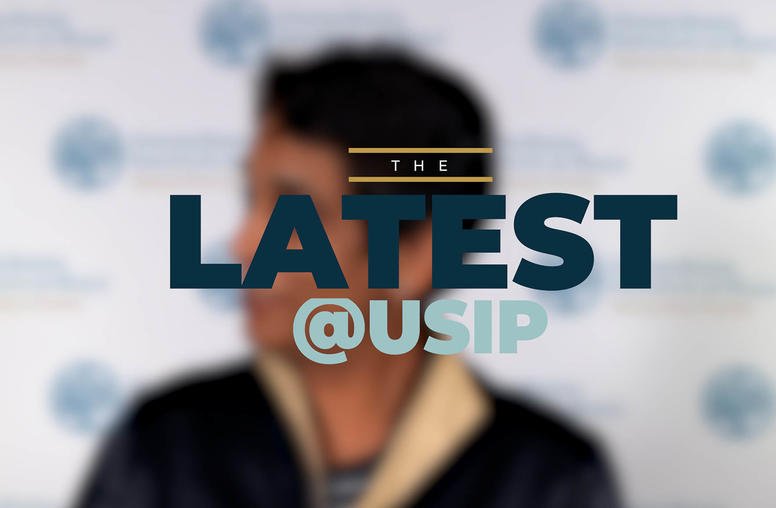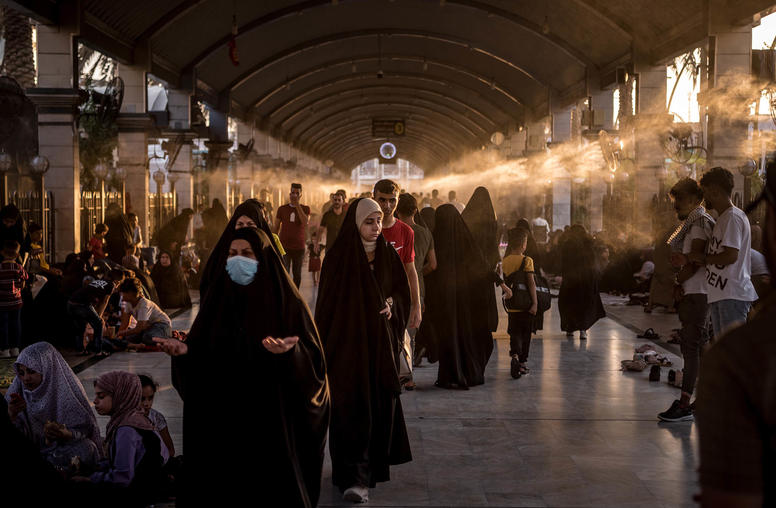As countries around the world contend with the immediate impacts of COVID-19, the pandemic poses an urgent threat to fragile societies where the bonds between citizens and government are frayed or broken. In these places, the virus threatens to exacerbate conflict, trigger severe humanitarian crises, and disrupt global coordination on public health issues. Our Corinne Graff examines the potential effects of COVID-19 in fragile states and outlines how the international community can calibrate efforts to address conflict and fragility amid the pandemic.
Transcript
Hi, I’m Corinne Graff, senior advisor at USIP, where we’ve been closely following the effects of the coronavirus pandemic around the world, especially in conflict zones and fragile societies.
We recently published an analysis on what needs to happen to mitigate the impacts of COVID-19 in these countries, which I’ll be talking about in this short video.
The crisis has clearly had major effects around the world, even in places with robust economies like China, Europe, and the United States. But it poses particular challenges in fragile states—in countries with weak economies and frayed bonds between the government and citizens—where oftentimes, great humanitarian needs are exacerbated by violent conflict.
So today, I’d like to respond to three questions we’ve received about the pandemic in conflict environments.
Why are fragile states so vulnerable to COVID-19?
Well, first of all, it’s important to recognize that there’s still a lot we don’t know about COVID’s impacts around the world, particularly its second- and third-order political and economic impacts.
That said, there are a number of things we do know and need to pay attention to in these countries, even as we deal with the consequences in wealthier countries.
We are already seeing that the impacts of coronavirus aren’t limited to public health in poorer countries. In many places, in fact, people could die from measures taken to stop the spread of virus. Lockdowns are disrupting health care in places where capacity to address other infectious diseases is already weak. The global economic slowdown is causing historic levels of unemployment. In Africa alone, the UN estimates that nearly half of all jobs could be lost, and nearly half of the global population could be living in poverty — on less than $1.90 a day — as a result of the pandemic. These are extraordinary numbers and portend unfathomable human suffering, and it’s important to remember that in many low-income countries there are no social safety nets and only limited public services, so people have very little to fall back on.
So, as terrible as this crisis has been in the more developed world, we’re looking at more severe, disruptive impacts in fragile countries that will have long-lasting consequences.
What do we know about how COVID-19 will affect conflicts and fragile environments?
Well, there are four sets of interlocking consequences that we need to be particularly concerned about over the coming months and years in these countries.
The first is famine as well as rising food insecurity. COVID-19 could drastically worsen food insecurity without swift action by the international community.
The second issue is the increased cost of aid and decreasing access for relief workers in these countries. In Yemen, The UN has just pulled out over half its remaining international staff from the capital to protect them from the spread of COVID-19, just as one of the world’s most severe humanitarian crises and conflicts unfolds in that country.
A third issue of concern is that COVID-19 is disproportionately affecting vulnerable populations around the world in these countries, including indigenous peoples, women, children and homeless people.
A fourth area of concern that we are following most closely here at USIP is the pandemic’s impacts on peace and stability more broadly. We are already seeing tensions rising, including in places like Uganda, where security services are resorting to excessive violence against protesters, which is fueling grievances. In Nigeria, small-scale riots over dwindling food supplies have taken place. Across the Sahel, armed groups and violent extremists may be seizing on the crisis to help bolster their legitimacy. Many governments in fragile states and around the world are usurping power and are using the crisis as an excuse to govern with a stronger hand, all of which could make these countries more fragile and susceptible to rising instability.
Ultimately, it will be important to watch the crisis response in these countries really closely, and the responses themselves must be seen as deeply political. In other words, how the response is delivered in a particular country, and whether it’s perceived to enable other agendas, could either fuel conflicts or the reverse case, if handled well, could help to build confidence and political resilience in these countries.
How do efforts to address the pandemic, fragility, and conflict align?
Most importantly, with the virus’s peak still ahead for many fragile countries, there is an opportunity to rally support for preventive measures to stave off the worst-case scenarios of the disease while also addressing the underlying sources of fragility and conflict.
One lesson that both the development and peacebuilding communities have learned from two decades of responding to conflicts and crises after they erupt is that it’s not enough to contribute financially to humanitarian responses and stabilization. Crisis response is more costly and less effective than proactive, preventive action to address the drivers of conflict and violence before they flare up.
Today in the U.S., this emerging consensus has culminated in the Global Fragility Act, an ambitious bill signed into law in late 2019 that aims to reform the way the U.S. engages in fragile states. Efforts are now underway to start implementing the bill, and if those continue to move forward, it will lead to a more effective approach.
I know we had a question come in from Malyn Mcellen, who asked, “What steps are being taken to prevent a rise in gender based violence?” It’s important to note that the GFA explicitly requires the USG to incorporate a gender lens into its prevention activities.
So, as this video comes to a close, let me remind our viewers that you can find much more COVID-related analysis, including on specific countries and issues, on our website, so please check out USIP.org.
Thanks very much for watching and thank you to everyone who submitted questions on social media! Please feel free to keep the conversation going by using the hashtag #COVIDandConflict.



